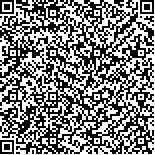| 摘要: |
| [目的]农作物播种面积信息不仅可为农情监测和作物估产提供重要的数据保障,还是国家制定粮食政策和经济计划的重要依据。快速、准确地获取农作物播种面积信息能为农业生产管理提供决策支持。极化SAR不受云雨天气的影响,在农作物遥感监测方面具有巨大的应用潜力,有效利用极化SAR数据进行农作物识别研究对促进雷达技术在国家农业遥感监测和农业供给侧结构性改革中发挥更大作用具有重要意义。[方法]以星载极化SAR技术的发展过程为论述主线,从单、双极化SAR数据,单、双极化SAR数据结合光学影像,全极化SAR数据三个发展阶段,对极化SAR数据在农作物分类识别中的研究与应用进行总结,并对比分析不同的识别特征、融合算法以及分类算法的优缺点。[结果]以往研究存在以下不足:当前研究多以识别水稻为主,对于难以识别的旱地作物研究较少;目前对旱地作物识别精度不高,平均识别精度不足85%;缺乏对不同作物散射机制及其随时相变化的研究,导致分类算法机理性不足,普适性较差。[结论]在今后的研究中,旱地作物散射机制的定量确定,如何利用散射机制及其变化来提高旱地作物遥感识别精度和普适性;目前分类算法大都是基于光学影像设计,如何利用SAR特殊的成像方式优化设计适用于极化SAR数据的分类算法,得到更高的分类精度;如何更好的跟光学遥感等多源数据(光学数据、GIS数据等)结合来提高精度,将成为未来极化SAR农作物识别中三个亟需重点解决的问题。 |
| 关键词: 合成孔径雷达全极化农作物识别目标分解分类算法 |
| DOI: |
| 分类号:S-1 |
| 基金项目:中央级公益性科研院所基本科研业务费专项(No1610132019010); 中央级公益性科研院所专项资金项目(IARRP 2017 16) |
|
| REVIEW OF CROP CLASSIFICATION AND RECOGNITION BASED ON SPACEBORNE POLARIMETRIC SAR DATA |
|
Sun Zheng, Zhou Qingbo, Yang Peng, Wang Di
|
|
Institute of Agricultural Resources and Regional Planning, Chinese Academy of Agricultural Sciences/ Key Laboratory of Agricultural Remote Sensing, Ministry of Agricultural and Rural Affairs, Beijing 100081, China
|
| Abstract: |
| The information of crop sown area can not only provide important data guarantee for crop monitoring and crop yield estimation, but also provide important basis for the state to formulate grain policy and economic plan. Timely and accurate information of crop sown area can provide decision support for agricultural production management. Polarimetric SAR is not affected by cloud and rain weather and has great application potential in crop remote sensing monitoring. The effective use of polarization sar data for crop identification research is of great significance to promote radar technology to play a greater role in national agricultural remote sensing monitoring and agricultural supply side structural reform. Taking the development process of spaceborne polarization sar technology as the main line, this paper discussed the development stages of synthetic aperture radar from single and double polarization sar data, single and double polarization sar data combined with optical image and full polarization sar data. The research and application of polarimetric SAR data in crop classification and recognition were summarized, and the advantages and disadvantages of different recognition features, fusion algorithms and classification algorithms were compared and analyzed. Previous studies have the following shortcomings: at present, most of the studies focus on identifying rice, but there are few studies on upland crops that are difficult to identify. At present, the recognition accuracy of dryland crops is not high, the average recognition accuracy is less than 85%. The lack of studies on the scattering mechanism of different crops and their temporal and phase changes lead to the lack of mechanism and poor universality of the classification algorithm. In future studies, firstly, quantitative determination of the scattering mechanism of dryland crops, and how to use the scattering mechanism and its changes to improve the accuracy and universality of dryland crops remote sensing recognition. Secondly, considering that most current classification algorithms are based on optical image design, how to optimize the classification algorithm suitable for polarized SAR data by using the special imaging mode of SAR to obtain higher classification accuracy. Finally, how to better combine with optical remote sensing and other multi source data (optical data, GIS data, etc.) to improve accuracy will become three urgent problems to be solved in future polarized SAR crop recognition. |
| Key words: synthetic aperture radar full polarization crop identification target decomposition classification algorithm |

